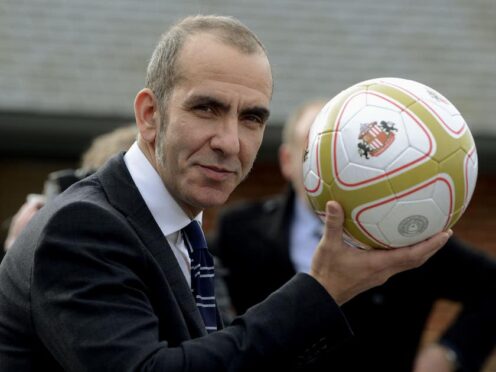
Paolo Di Canio was appointed as Sunderland head coach on this day in 2013.
Sunderland confirmed the controversial Italian as Martin O’Neill’s successor, with the Irishman sacked following the Black Cats’ 1-0 loss to Manchester United – a result that left them just a point above the Premier League drop zone.
Di Canio – who had previously described himself as a fascist – caused immediate controversy with his arrival in the north-east, with former foreign secretary David Miliband resigning from his post as club vice-chairman and non-executive director due to the Italian’s “past political statements”.

Di Canio released a statement after his arrival saying: “I am not political, I do not affiliate myself to any organisation, I am not a racist and I do not support the ideology of fascism. I respect everyone.”
On the pitch, the former Celtic and West Ham forward’s immediate objective was to revitalise a squad for a seven-game schedule that would determine Sunderland’s fate.
Sunderland chairman Ellis Short said: “Paolo is hugely enthused by the challenge that lies ahead of him. He is passionate, driven and raring to get started.

“Our fans have shown tremendous patience and understanding this season. They have continued to back the team in huge numbers, both home and away, and that is something that continues to inspire all of us in our drive to give them the successful club they deserve.”
Di Canio’s appointment represented a gamble for Sunderland given his volatile nature and lack of top-level experience.
His only previous managerial role was during a tumultuous 18-month spell at Swindon, which was highlighted by winning promotion in his first season.
Sunderland AFC confirms that it has parted company with Head Coach Paolo Di Canio this evening.
— Sunderland AFC (@SunderlandAFC) September 22, 2013
His reign was also marked by occasional outbursts against his players before his sudden departure, when he cited “broken promises” from the Swindon board as the reason for his exit.
Di Canio had six days to prepare for his first game against Chelsea at Stamford Bridge, before a Tyne-Wear derby against fierce rivals Newcastle which Sunderland went on to win 3-0.
Although he kept Sunderland in the Premier League, he was sacked after only six months in the role, with the Black Cats winning just three of their 13 games during his tenure.

Enjoy the convenience of having The Sunday Post delivered as a digital ePaper straight to your smartphone, tablet or computer.
Subscribe for only £5.49 a month and enjoy all the benefits of the printed paper as a digital replica.
Subscribe